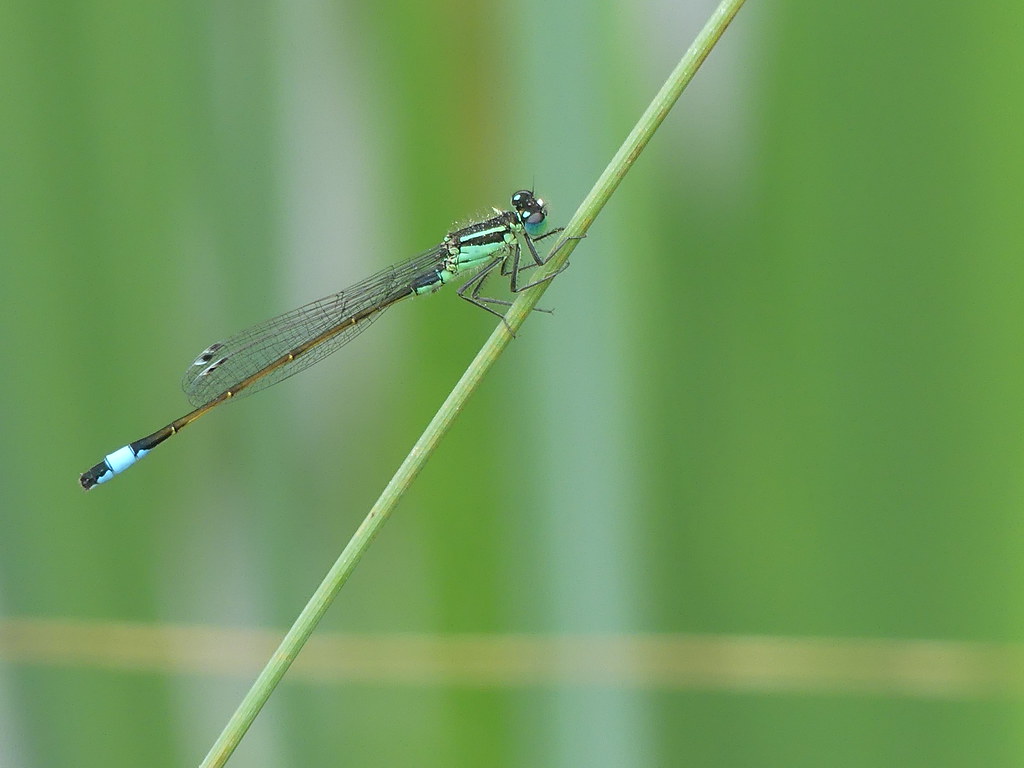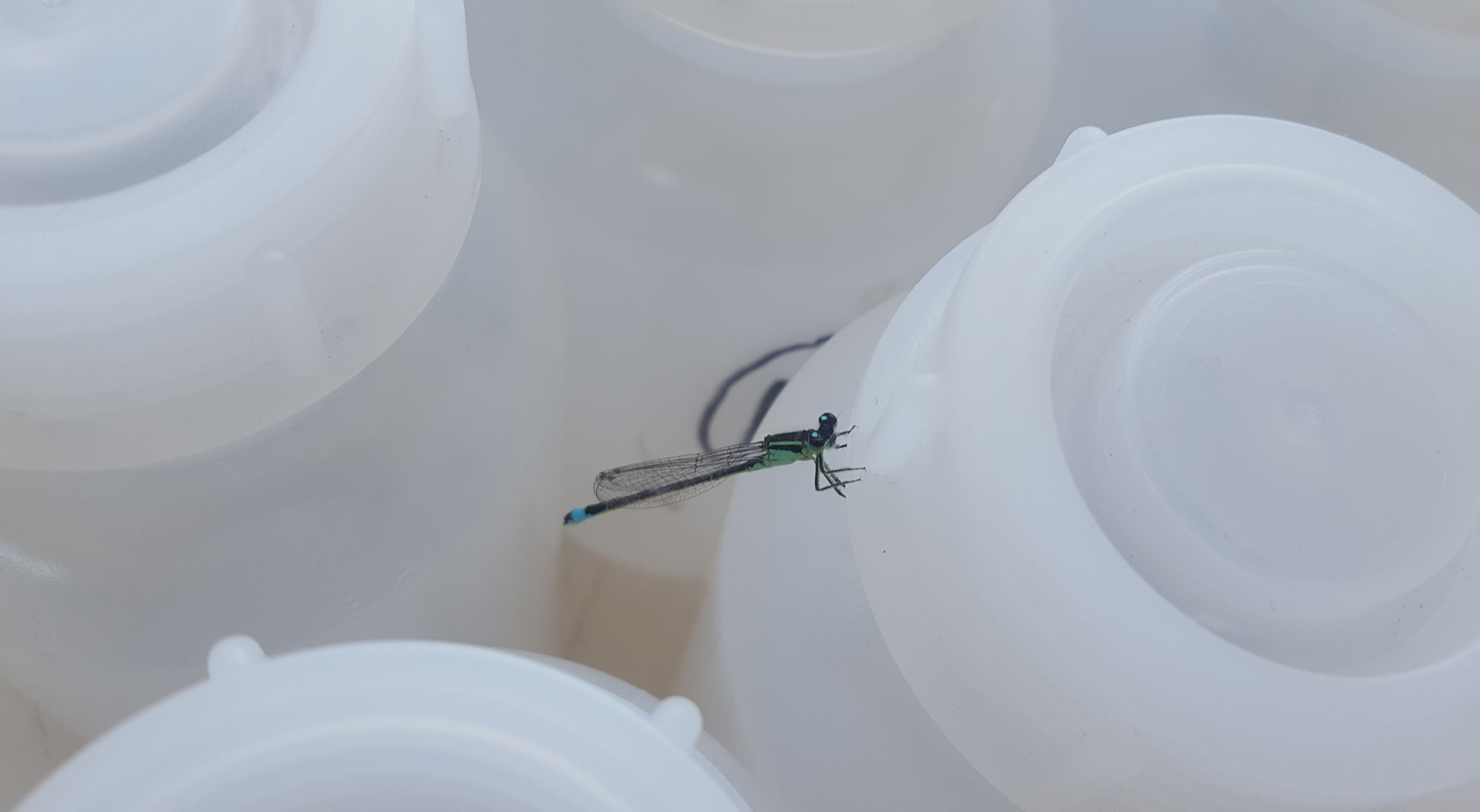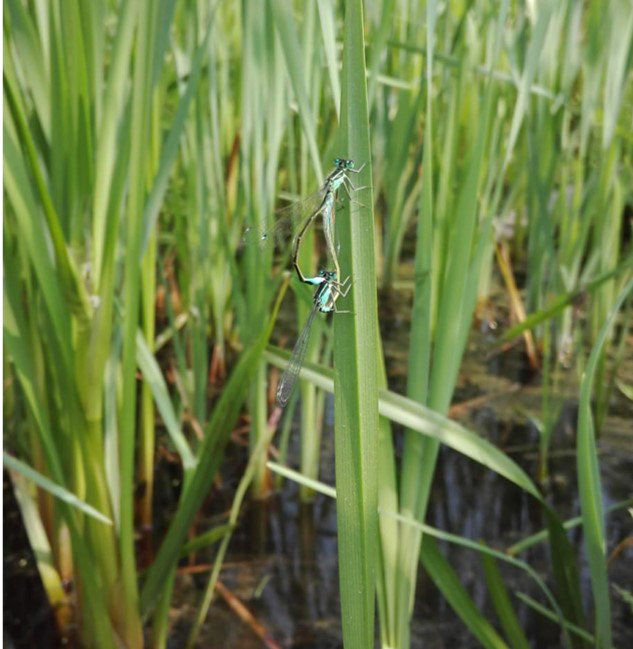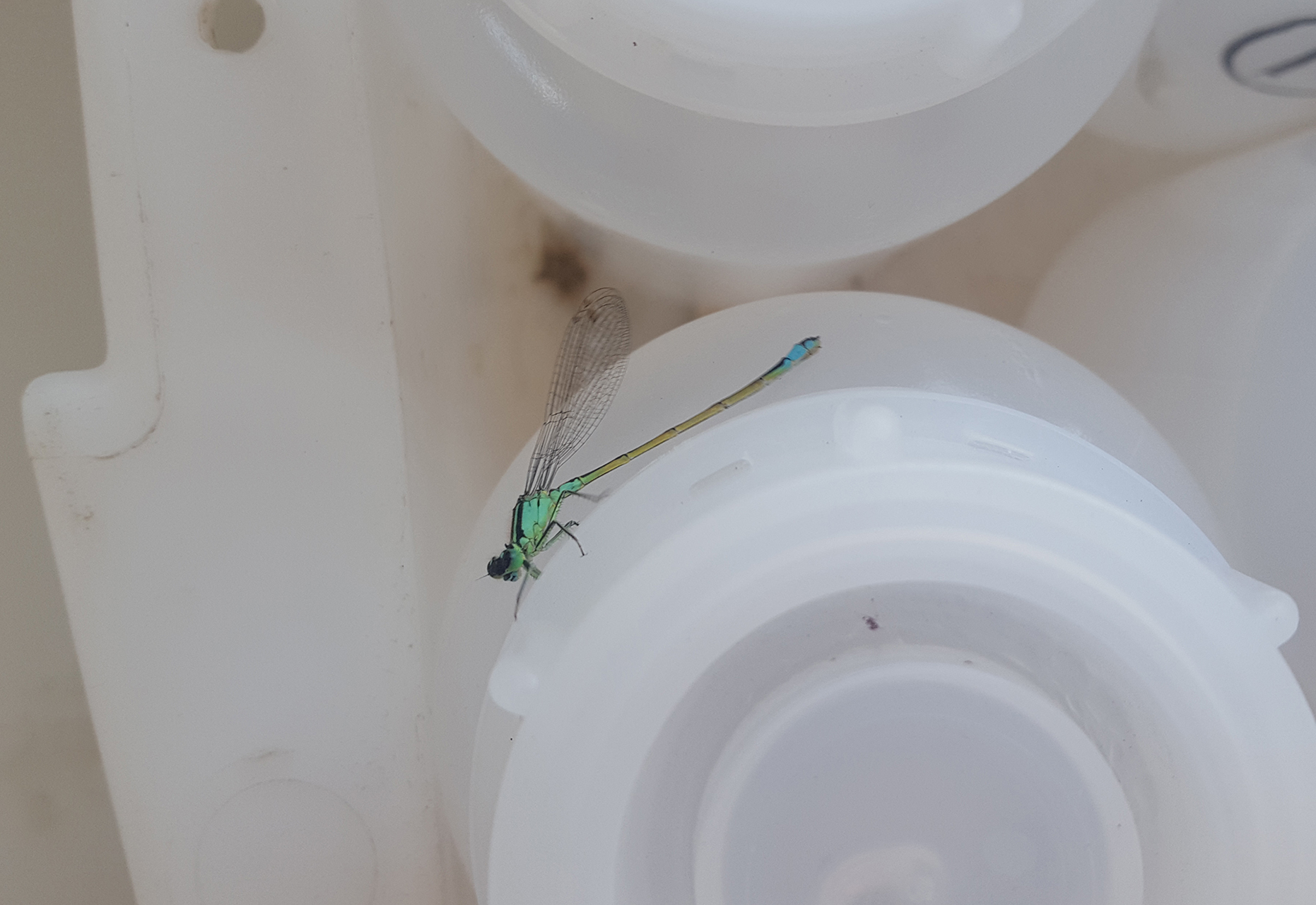
Effect of insecticides on damselflies greater than expected
The latest research from the Leiden outdoor laboratory ‘Living Lab’ shows that the insecticide thiacloprid strongly influences even the most common and robust dragonfly species in the Netherlands. The study was published in the Journal of Applied Ecology.
Insecticides and common blue tails
The impact of this substance on insects under natural conditions was as yet unknown,’ according to PhD student Henrik Barmentlo of the Institute of Environmental Sciences Leiden. Together with professor Martina Vijver, biology student Laura Vriend and Roy van Grunsven of the Butterfly Foundation, he investigated the effect of thiacloprid. This insecticide belongs to the neonicotinoids, which are also widely used in the Netherlands (see box).
The researchers focused on blue-tailed damselflies or common bluetails, one of the most common and robust damselfly species in the Netherlands. They did not do this in a closed laboratory, but in the special test ditches outside in the Living Lab. Here they exposed both caged damselflies and damselflies living freely in the ditches to field-realistic concentrations of thiacloprid. In other words: concentrations that truly occur in nature, because people use insecticides to protect agricultural and horticultural crops.
Neonicotinoids
Farmers use neonicotinoids to control insects. The active substances in these insecticides are related to nicotine. They act on the central nervous system of insects. Initially, the agents were only tested under laboratory conditions, but there are more and more signals about the harmful effects in real nature.
Scientist assumed that only insects that actually eat a treated crop would die from the insecticides. However, neonicotinoids also occur in the pollen and nectar of the treated crops. Therefore, they are also harmful to bees and other insects. Neonicotinoids are mobile in the soil and therefore easily end up in the surface water. The Living Lab researches the effects of this.
Nature is not a lab
It turned out that already at a low concentration of insecticide, common bluetails living in cages in the ditch ate less, grew more slowly and were less active. The effects are smaller in animals that were fed than in animals that had to hunt themselves. Barmentlo: 'This shows the importance of field realism. In the lab the insects receive high-quality food, but in a natural situation this is not always available. As a result, the susceptibility to insecticides in nature can be much higher'.
-

-

Photo: Henrik Barmentlo -

Photo: Laura Vriend -

Photo: Henrik Barmentlo
The researchers also discovered that in free-living animals the number of damselflies that developed from larvae to adults (emerging), strongly decreased with increasing concentrations of insecticide. (Measured by means of an emergence trap, a special trap made of cloths to catch flying water insects, as shown in the cover photo). This sharp decrease in the number of emerging damselflies is in its turn likely to lead to reduced reproduction. In the long run, this can lead to the local disappearance of even the blue-tailed damselflies, one of the most common species. Data from the Butterfly Foundation reinforces this idea and shows that the numbers and distribution of these and other species of damselfly have been declining since 2008. Barmentlo: 'In recent years, stricter regulations on neonicotinoids have been implemented. Thiacloprid is also currently being reassessed. Future reduced usage of these substances gives hope that insect populations may be able to recover.’
Scientific publication: S. Henrik Barmentlo, Laura M. Vriend, Roy H.A. van Grunsven, Martina G. Vijver. 2019. Environmental levels of neonicotinoids reduce prey consumption, mobility and emergence of the damselfly Ischnura elegans. Journal of Applied Ecology.
